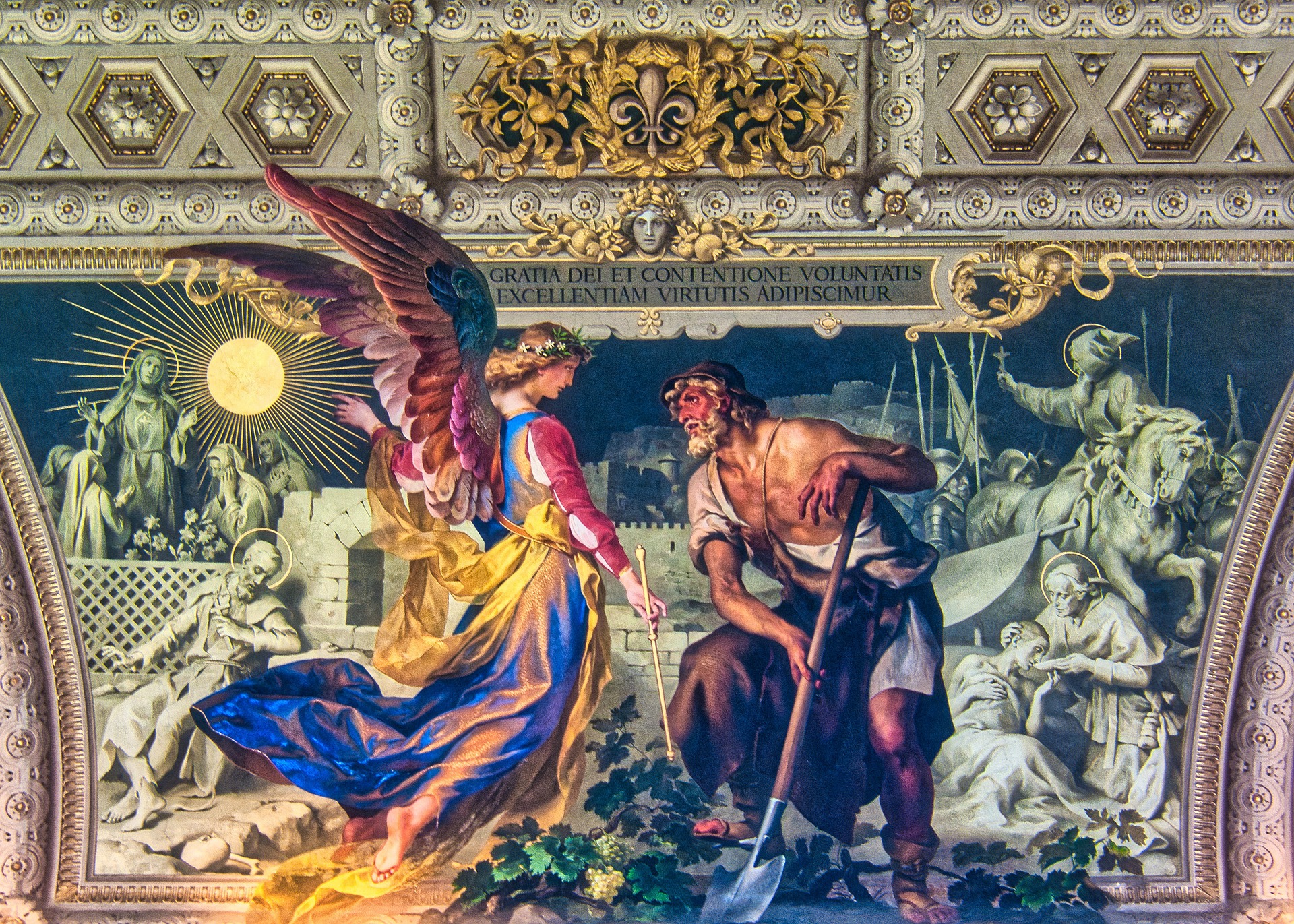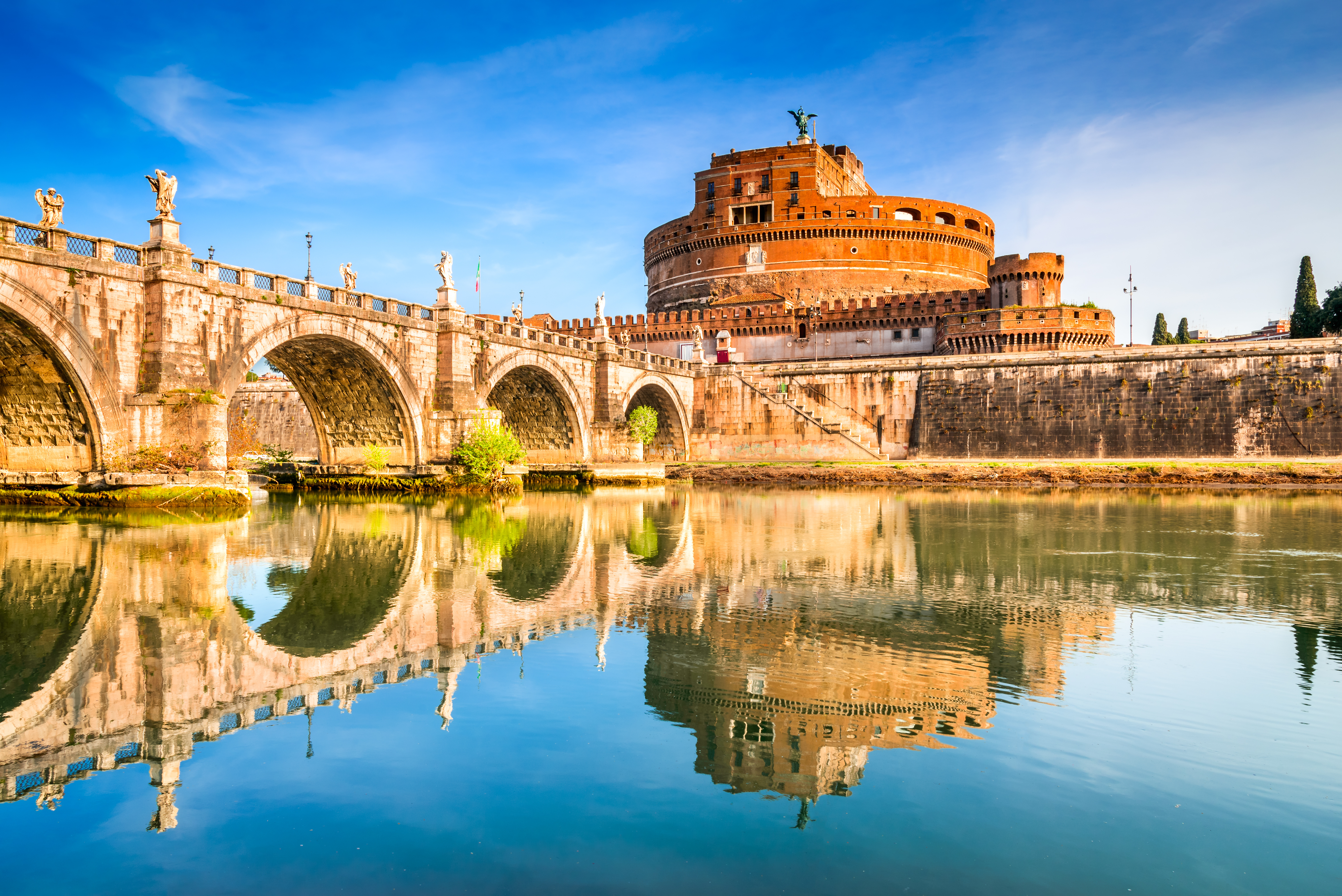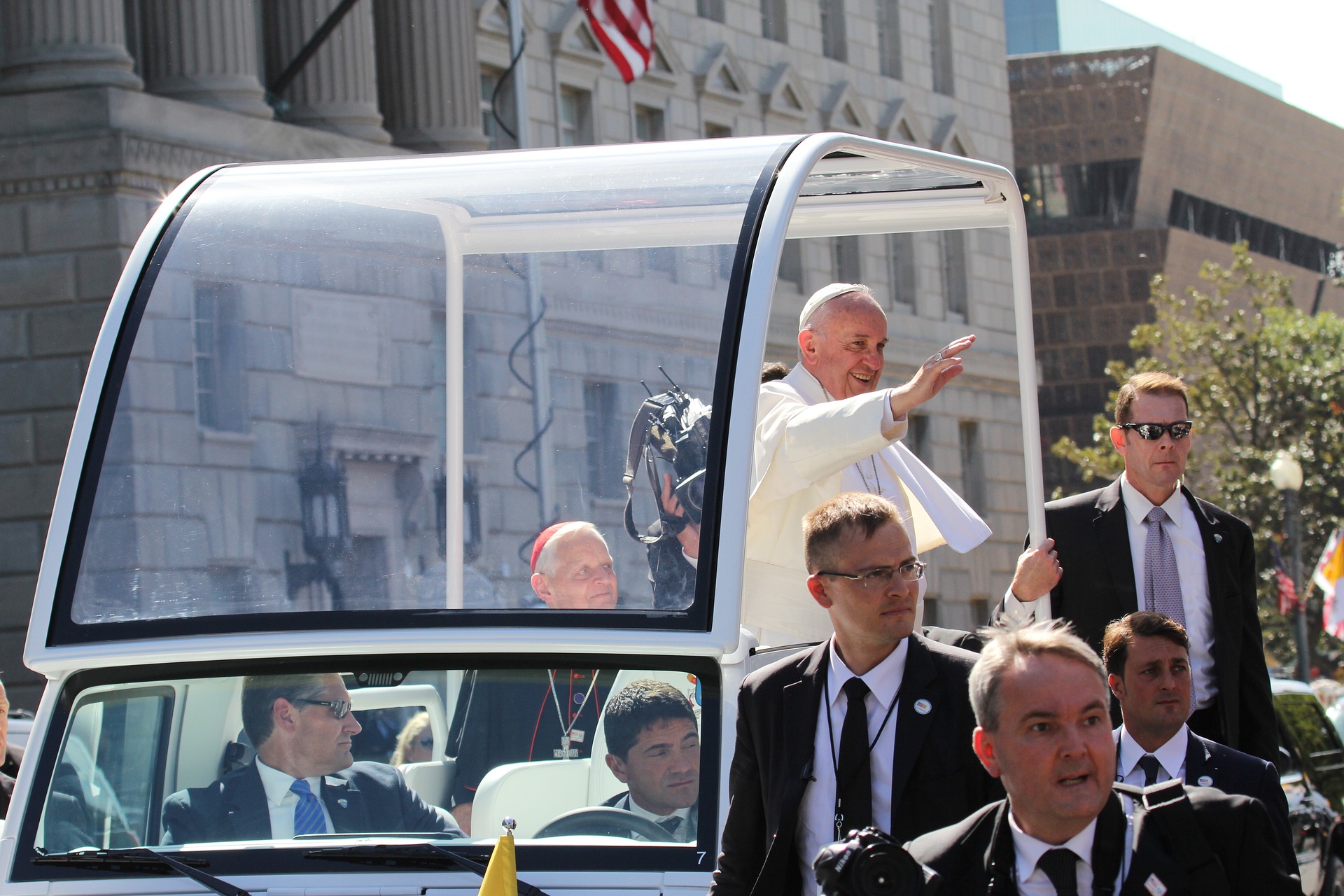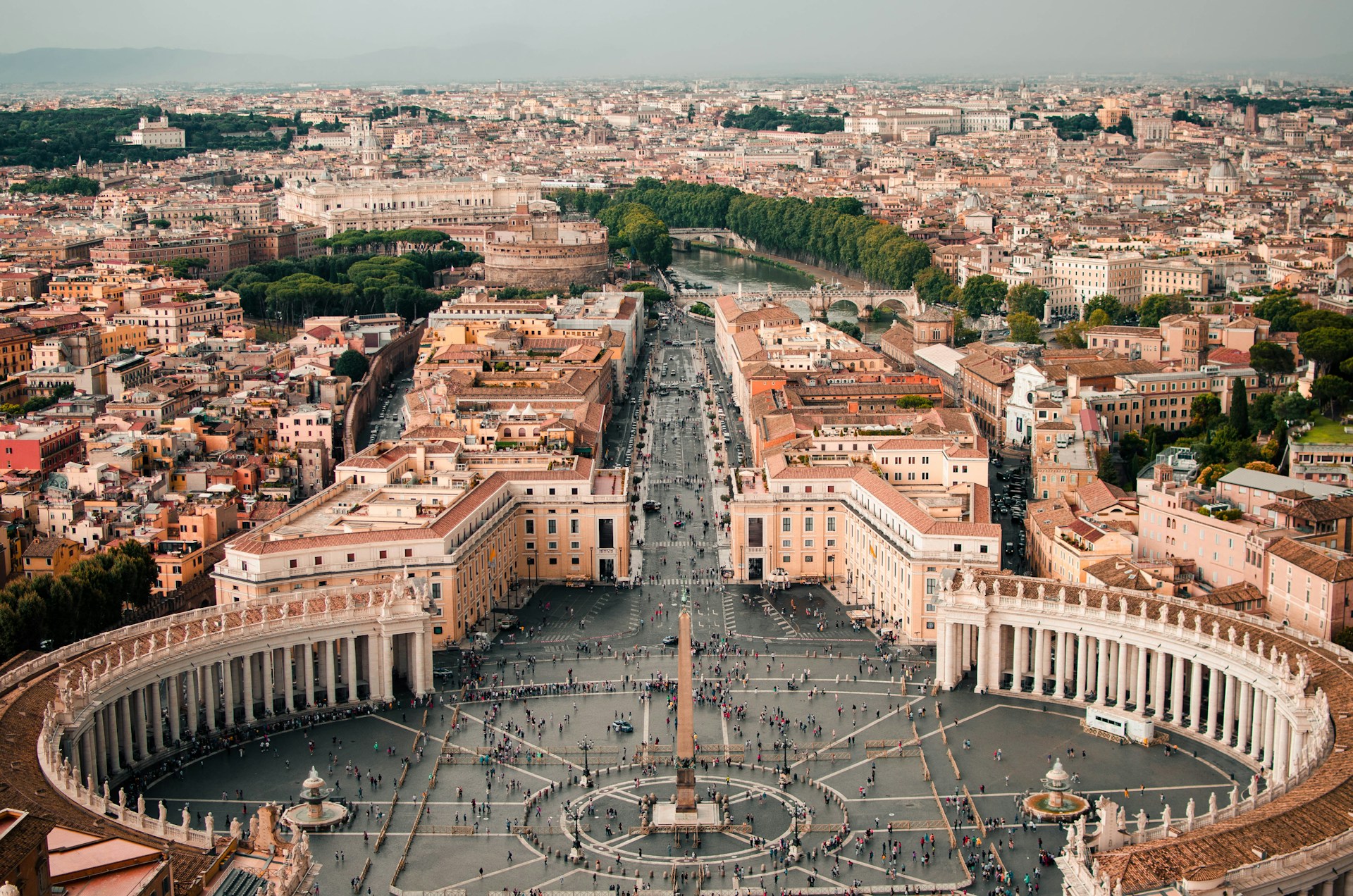
What It’s Like To Visit the Sistine ChapelWhat It’s Like To Visit the Sistine Chapel
The magic of Rome has inspired countless people for centuries. Visitors come from all over the world to discover the wonders of the Italian capital. And one place that is sure to leave you breathless is the famous Sistine Chapel.
It’s not just a bucket-list sight for tourists. As a local here in Rome, the beauty of the Sistine Chapel is still something that captivates me each time I see it. In this post, I’ll provide you with all the information you need about the Sistine Chapel, how to visit it, when to go, what you’ll see while there, and how to experience it with a guided tour.
Come with me on a journey to one of the most enchanting places in the Vatican!
What is the Sistine Chapel?

The Sistine Chapel is the main chapel of the Apostolic Palace, which is the home of the pope in Vatican City. The chapel has been the site of many important events during its history. It’s here that the election of the new pope takes place.
Fun fact: That’s called a papal conclave. When it’s time to choose the new pope, a group of cardinals gathers in the Sistine Chapel to vote for the best candidate for the role. When they reach a decision, white smoke comes out of a special chimney located in the Sistine Chapel. If they need to vote again, the smoke will be black.
But the real reason the Sistine Chapel is so famous is for how it looks. That’s mainly thanks to Michelangelo’s beautiful frescos.
“The Last Judgment” painting, located behind the altar, is iconic and the most recognizable in the chapel. Many visitors decide to visit the Vatican Museums for only one reason — the chance to gaze at Michelangelo’s masterpiece.
How to get to the Sistine Chapel

You’ll find the Sistine Chapel at the end of your visit to the Vatican Museums. This is the only way to visit the chapel. There isn’t a separate ticket for it.
The Vatican Museums are an intricate maze of beautiful art. Think of the Sistine Chapel as the crown jewel of your visit. After getting lost in the museums, just when you think it can’t get any better — surprise! The Sistine Chapel is there to make your visit unforgettable.
To reach the Sistine Chapel you simply need to head to the Vatican Museums entrance in Viale Vaticano. From there you can follow the directions inside pointing to the chapel.
Did you know? Once you pass the entrance of the Vatican Museums, you’ll be in another country! The museums are part of the Vatican City, the smallest independent nation in the world. But you don’t need a separate visa to enter. Whatever passport or visa you used to enter Rome should be good to get you into the Vatican.
A brief history of the Sistine Chapel

Before you visit the Sistine Chapel, here’s a quick overview of how it got here.
Pope Sixtus IV ordered the Sistine Chapel’s construction in 1473 as part of a general renewal of the Vatican’s buildings. The chapel is named “Sistine” in honor of him.
In 1483, the chapel was consecrated and dedicated to the assumption of the Virgin Mary to heaven. Talented artists such as Sandro Botticelli, Luca Signorelli, Domenico Ghirlandaio, and Pietro Perugino helped paint the chapel’s walls. The architecture was designed simply and harmoniously, which allowed the artwork to take center stage and be the focal point of the space.
Then in 1504, the Sistine Chapel suffered some damage to its ceiling, probably because of the irregular nature of the ground. So Pope Julius II ordered Michelangelo to repaint the ceiling.
This is when it gets really good. Michelangelo decorated over 10,000 square feet of ceiling with beautiful frescoes depicting scenes from the book of Genesis. In just four years (1408-1412), he created a unique masterpiece.
Later in his life, Michelangelo actually worked on the Sistine Chapel again.
In 1541, he completed “The Last Judgment” fresco behind the Chapel’s altar wall. According to the story, Michelangelo wasn’t feeling confident about his work. He thought that he had more talent as a sculptor than as a painter. Luckily he preserved and brought to life the incredible wonder we can admire today.
What to see inside the Sistine Chapel
The Sistine Chapel is so full of details and peculiarities, that you might feel unsure what to focus on. Here are the masterpieces you can’t miss!
Michelangelo’s ceiling frescoes

Michelangelo’s frescoes are what makes the Sistine Chapel truly special.
The frescoes depict scenes from the first few pages of Genesis — the story of the creation of the world. At the center, you’ll recognize “The Creation of Adam,” sometimes called “The Creation of Man,” representing the creation of humanity.
On the sides, you’ll find depictions of Christian prophets, pagan sibyls, and angelic naked figures known as “ignudi.” These figures show Michelangelo’s deep knowledge of human anatomy. Through their representation, Michelangelo wanted to celebrate the human body, which God created in his image.
You can spend a lot of time just looking above you, but trust me, it’s worth it to take your time.
The Last Judgment

Michelangelo’s later contribution to the Sistine Chapel is “The Last Judgment.” This fresco shows Jesus Christ judging humanity after the Apocalypse.
While the ceiling frescos show admiration for humanity and God’s creation, “The Last Judgment” has a different tone. Its atmosphere is darker, possibly a glimpse into the age of uncertainty Michelangelo lived in at the end of his life.
Local tip: Look for the brushstrokes. Unlike the ceiling frescoes, this painting has not undergone extensive restoration, so you can see the original strokes of paint created by Michelangelo himself.
Wall frescoes by Renaissance masters

Once you’ve recovered from Michelangelo’s wonders, you should focus your attention on the other frescos. Even if they’re less famous, they’re not less impressive.
Marvel at the masterpieces of Renaissance artists such as Ghirlandaio, Botticelli, and Perugino. Botticelli’s “Temptation of Christ” and Ghirlandaio’s “Calling of the Apostles” (specifically Peter and Andrew) are incredible examples of their talent.
The frescos tell a great story to anyone who takes a closer look — the story of humanity, from its creation to the end of the world. Lose yourself in the stunning beauty of this art, and you may never want to leave the Sistine Chapel!
Mosaic floors of the Sistine Chapel
The walls and ceiling covered with paintings get most of the attention, but don’t forget to look down when you visit.
Below you is another kind of art: intricate mosaic flooring. Through the whole Vatican Museums, you’ll find beautiful mosaics on the floors. Some were originally part of ancient Roman buildings and reused to adorn the Vatican. They depict mostly mythological scenes with vibrant colors.
Other floors, including the ones in the Sistine Chapel, are decorated with complex geometrical patterns. This technique is called Cosmati, after a famous Roman family.
It’s a fitting reminder, especially in this sacred space, that beauty is sometimes where you least expect it, even right under your feet!
Guided tour with the Sistine Chapel
Can you take a guided tour of the Sistine Chapel? The short answer is no. If you’re thinking of a tour where a guide leads you to the artwork and points out interesting details in front of you as you listen, that’s not possible. There’s conversation allowed inside the Sistine Chapel, and guided tours aren’t allowed in the chapel either?
So how can you get the guided tour experience? We recommend visiting the Vatican Museums with a local guide who can tell you about all the art and history here. When it comes to the Sistine Chapel, your guide will share an introduction for what to expect inside and then let you enjoy it on your own in the sacred silence of the room for as long as you wish.
This is how we structure our guided tours of the Vatican Museums that include the Sistine Chapel. Your tour ends right outside the chapel, and you can continue inside for this crowning experience of your visit to the Vatican.
A virtual tour of the Sistine Chapel
If you don’t have enough time to make it to the Sistine Chapel, fear not — you can enjoy a virtual visit! The Vatican Museums website has a section that’ll allow you to take a 360-degree online tour of the chapel.
Naturally, nothing will beat the feeling of visiting the Sistine Chapel in real life. But if you can’t make it to the Vatican anytime soon, this is a very special tool to admire Michelangelo’s art today.
Take your mouse and zoom in to your heart’s content!
Restoring the Sistine Chapel
The Sistine Chapel doesn’t have any closures currently planned for restoring the artwork, but this is an ongoing process.
Even the most impressive masterpieces suffer from the passing of time. The frescoes of the Sistine Chapel are no exception. To preserve their integrity and keep them shiny and brilliant, the chapel has needed several restorations over the centuries.
The early attempts at restorations were in 1625 and between 1710 and 1713. The methods used were quite unusual — they used oils, sponges, and even bread to wipe up dust and dirt. Often, these techniques damaged the art that they were supposed to clean.
After another intervention in the 1930s, a major restoration happened between 1979 and 1999. This final procedure was an extensive work, aimed at giving the Sistine Chapel a new vibrant light. Still, many art experts criticized this restoration. They claimed that the alteration of the colors and some shapes of the frescos was extreme.
The restorations are necessary to keep artistic pieces alive, but at the same time, it’s important to maintain the original intent of the artist intact.
You can rest assured that when you visit, the paintings will be well-maintained, but some signs of age may show through. Fortunately, the chapel has been open for years (the last long closure was for nearly a decade in the ’80s), and we can continue to enjoy the art displayed in excellent condition.
Tips to visit the Sistine Chapel

Are you still unsure how to prepare for your visit to the Sistine Chapel? Here we are with all the tips you need to make the very best of your visit.
- Book tickets ahead of time: The queue to get inside the Vatican Museum is usually long. I live close to the Vatican and often pass by. Every day, I can see endless crowds waiting for their chance to get in. The best way to save time (and your vacation) is to reserve the entry ticket online. After all, we all deserve a stress-free holiday!
- Avoid the busiest times: The Vatican Museums are closed on Sundays, except the last Sunday of every month when admission is free. On those Sundays, the Sistine Chapel is more crowded than usual. If you choose to go on the day when admission is free, you should show up very early in the morning. In case you arrive too late, your visit to the Sistine Chapel will be comparable to taking Rome’s subway during peak hours. Trust me — not the most pleasant experience.
- Visit with a guide: Admiring art is always a good idea, but learning about its history and context makes it even more enjoyable. Having an expert guide to prepare you for your visit to the Sistine Chapel will allow you to get a better understanding of the incredible beauty surrounding you.
- Don’t miss anything: You may be so focused on the most famous frescoes that you might end up missing the other stunning details of the Sistine Chapel. Experience things at your own pace. Take the time to enjoy all that the chapel has to offer. If you’re concerned about your schedule, keep in mind that around 20 minutes in the chapel should be enough for your visit.
- Respect the rules: Taking pictures or videos inside the Sistine Chapel is strictly forbidden. If you were planning on taking the perfect selfie with the Creation of Adam, think again. The security guards are strict and will check if anybody uses their phones. Also, remember that you’re in a sacred place — you should be respectful and silent.
- Don’t bring dangerous objects: To access the Vatican Museums and the Sistine Chapel you’ll have to pass a security check. Anything dangerous, such as knives, scissors, or katanas, isn’t allowed. To avoid any embarrassing moments with the Vatican security, make sure to leave anything sharp at home.
Discover the beauty of Sistine Chapel

If you’ve read this far, you can see why there’s so much history and detail relating to the Sistine Chapel. Visit the Vatican Museums with a guide, and we’ll take care of your ticket (including chapel entry) and help you discover the best of both the chapel and the galleries that lead up to it.
As mentioned above, although your guide will tell you what to look for inside and prepare you for your visit, you’ll need to be quiet inside and enter on your own to enjoy its beauty in peace.
The Vatican is home to many wonders, and you’ll be sure to feel amazed at every corner. But the Sistine Chapel is special. Centuries of history and artistic genius will surround you and make your journey to Rome unforgettable.
Visiting for the first time? Check out our first-timer’s guide for what to see and do at the Vatican.


